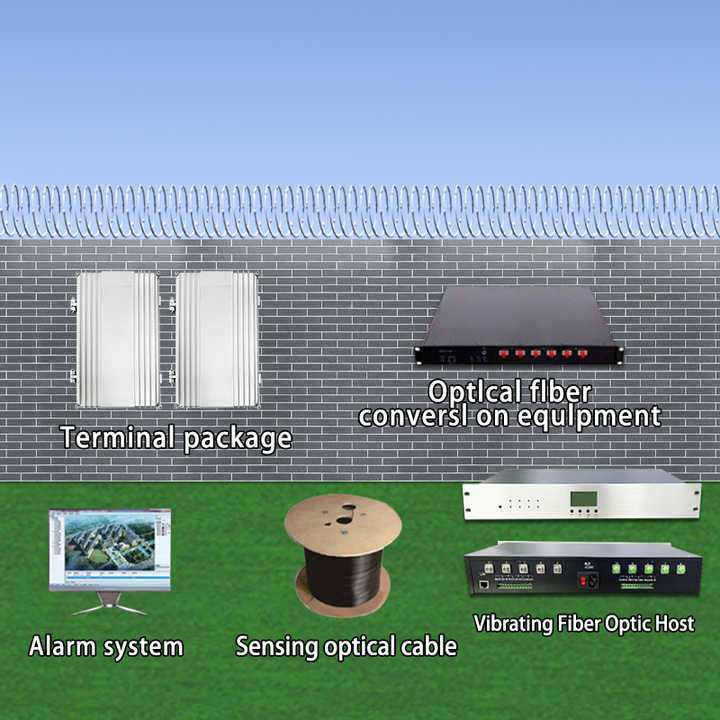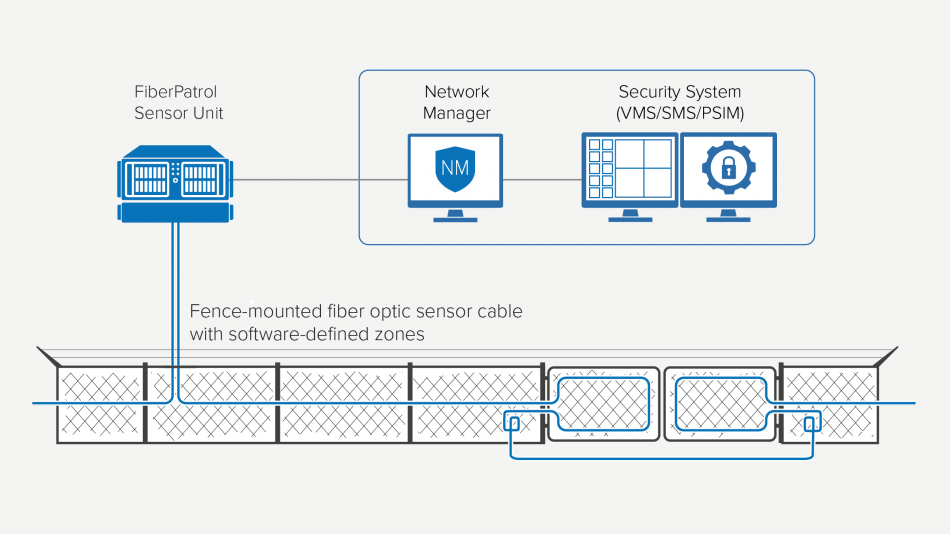Security Fibers: A Durable Solution for Advanced Security Systems
Security Fibers: A Durable Solution for Advanced Security Systems
Blog Article
The Ultimate Guide to Fiber Optic Protection Equipments for Your Organization
In an era where safety and security concerns are paramount for companies, understanding the intricacies of fiber optic technology can be transformative. This guide describes how integrating fiber optic safety and security systems not just enhances information defense yet additionally uses advantages like resistance to interference and real-time monitoring capabilities. As companies examine their safety needs, it becomes essential to consider the installment procedure and the most up to date developments in the field. What details variables should be prioritized when selecting the appropriate system, and exactly how can companies ensure they make the most enlightened options?
Understanding Fiber Optic Modern Technology

The core of a fiber optic cable television is composed of a slim glass or plastic center, surrounded by a cladding layer that mirrors light back right into the core. Single-mode fibers are developed for long-distance transmission, while multi-mode fibers are appropriate for much shorter distances, typically made use of within structures.
Fiber optics are not only quicker yet also much more safe than typical wiring. Their fundamental resistance to electro-magnetic interference and the problem of taking advantage of the signal without discovery make them a preferred choice for services focusing on information integrity and protection. As organizations increasingly rely upon safe and reliable communication systems, recognizing fiber optic innovation comes to be important for educated decision-making.
Secret Advantages of Fiber Optic Security
When considering safety options for a service, the advantages of fiber optic systems are particularly engaging. Firstly, fiber optic technology uses exceptional data transmission speeds and data transfer capability, making it optimal for handling high-resolution video feeds from surveillance video cameras. This ability guarantees that security personnel receive real-time information, enhancing overall reaction times to prospective security dangers.
Moreover, fiber optic cables are naturally immune to electromagnetic disturbance, which can endanger the stability of typical copper-based systems. This resistance guarantees that the information sent remains secure and uninterrupted, supplying a much more reputable safety and security framework. In addition, fiber optics are less prone to physical damages, as they are made from glass as opposed to metal, minimizing maintenance expenses and downtime.
Fiber optic systems offer boosted cybersecurity functions, consisting of security capacities that secure delicate information from unauthorized gain access to. Collectively, these benefits make fiber optic security systems a robust choice for organizations looking for to boost their safety and security measures.
Setup Refine and Factors To Consider
Considering the complexities involved, the setup process of fiber optic security systems needs cautious planning and implementation. The first step involves an extensive website evaluation to determine ideal areas for cabling and devices. This assessment should consider ecological elements, existing facilities, and possible susceptabilities.

Additionally, the installation should conform with local structure codes and industry standards. This may consist of coordinating with various stakeholders such as building supervisors, IT groups, and safety employees to make certain smooth combination with existing systems.
Post-installation, extensive screening is required to validate system performance and recognize any type of concerns that might emerge. By prioritizing these considerations throughout the installation procedure, companies can guarantee a robust and efficient fiber optic safety and security system that fulfills their particular safety and security needs.
Most Recent Developments in Fiber Optic Safety
Recent improvements in fiber optic modern technology have actually significantly boosted the capacities of safety and security systems for companies. One of one of the most noteworthy advancements is the integration of fiber optic sensors that can have a peek here find resonances and intrusions along the boundary of a facility. These sensors give real-time monitoring, allowing fast feedback to potential violations.
In addition, the advancement of distributed fiber optic noticing modern technology permits for the constant tracking of large locations with a solitary fiber cord. This method not just minimizes installment prices but likewise enhances the integrity of keeping track of systems by getting rid of the demand for multiple, separate sensors.
In addition, innovations in multiplexing methods have made it possible for services to send substantial amounts of information over fiber optic networks, enhancing the abilities of video security systems. High-def video feeds can now be sent out over long ranges without loss of top quality, making certain that safety personnel have accessibility to clear and actionable information.
Lastly, the use of artificial knowledge (AI) along with fiber optic systems is transforming danger detection. AI algorithms can examine information from fiber optic networks to identify unusual patterns or actions, permitting for positive safety and security steps. These developments jointly stand for a considerable leap ahead in fiber optic protection innovation.
Picking the Right System for Your Service
Picking the appropriate fiber optic security system for your business is vital for making certain optimum security and tranquility of mind. To make an educated selection, evaluate your specific security needs, thinking about factors such as the dimension of your premises, the nature of your operations, and possible susceptabilities.
Begin by reviewing the degree of protection called for; as an example, high-risk environments might require advanced see here systems with incorporated monitoring and breach detection capabilities. Next off, think about scalability; as your service expands, your security system should can broadening to suit raised demands without considerable overhauls.
Furthermore, explore the reliability and efficiency of different systems. Search for carriers with established credibilities and consumer testimonials that attest to their solution quality. It's additionally recommended to inquire regarding the technology's compatibility with existing framework, making certain a seamless integration procedure.
Verdict
In final thought, fiber optic security systems offer a durable solution for boosting company security frameworks. The newest innovations additionally reinforce the performance of these systems, making sure that businesses Look At This continue to be protected and versatile in an ever-evolving risk landscape.
Report this page